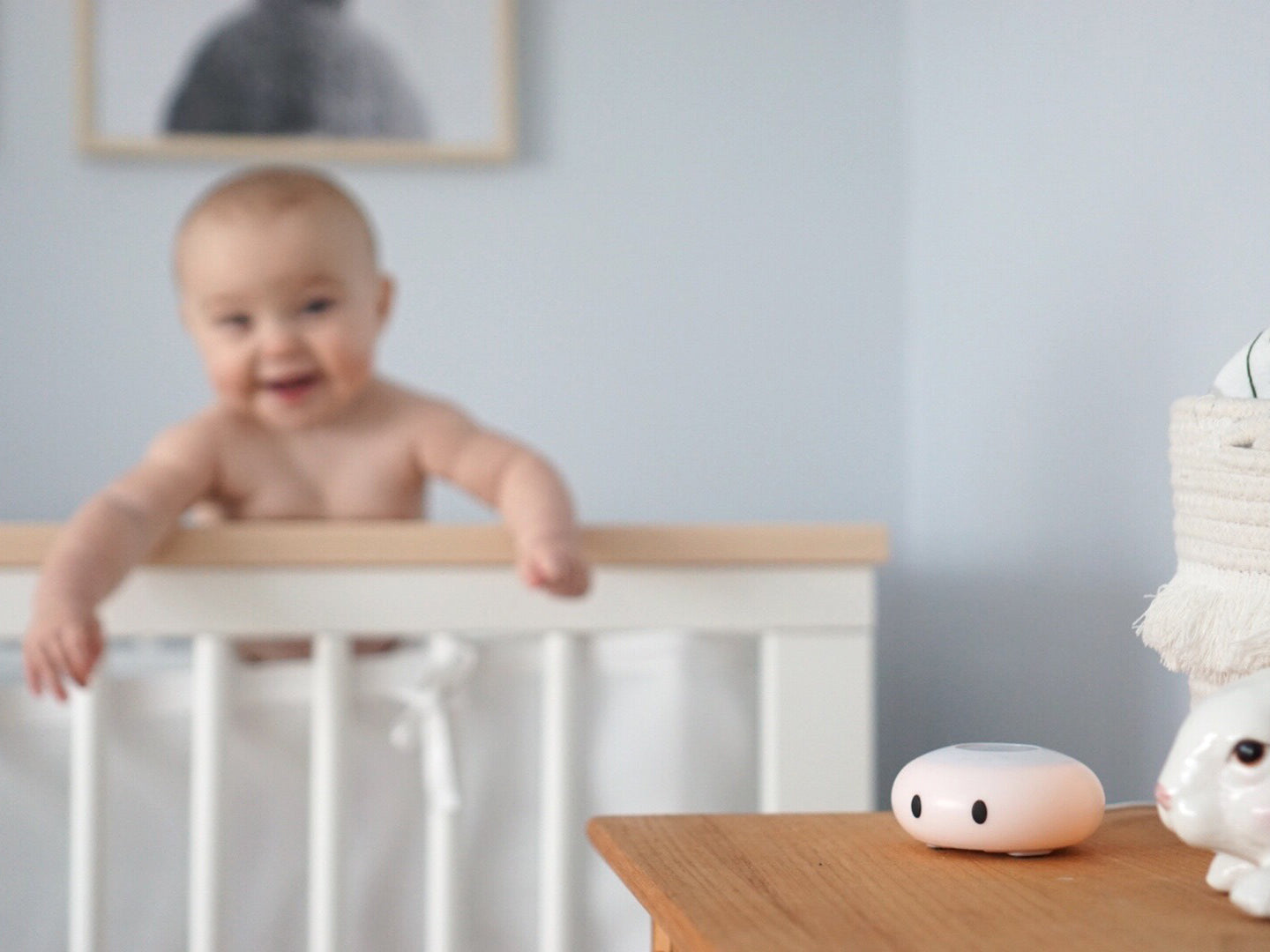
How do I know if my baby is too hot or cold?
If you have a KELVIN night light or are thinking about getting one, chances are that you're looking to monitor your nursery or kid's room's temperature. That's great! Worrying about whether your child is too hot or cold can be nerve wracking, especially if it's an infant. Babies can't verbally express to us whether they're uncomfortable so it can take some practice. Here are some tips to make you feel more confident about your baby's comfort level:
Tip #1: Keep your baby's room between 65-72 degrees Fahrenheit (18-21 degrees Celsius).
Many parents think that a baby needs to be bundled up in many layers - but that is not true! Infants are more prone to overheating and overheating increases the risk of SIDs especially in the first six months of life. But don't stress! There is a big range in which experts recommend - stick between 65 and 72 degrees Fahrenheit (18-21 degrees Celsius) for your baby.
The easiest way to track your infant's room temperature is with a thermostat but if your room or camera monitor doesn't have one, a portable, indoor thermometer will do the trick.
KELVIN is a room thermometer that changes colors based on whether it's too warm, cold or just right! If the room is too cold, KELVIN will turn blue. If the room is too hot, KELVIN will turn red. If the room is at an appropriate temperature, KELVIN will turn amber orange. What's even better is that KELVIN is customizable, which means that depending on your own comfort level, advice from your pediatrician and where you live, the amber range can be customized. We understand that what's right for one family may not be for another.
Tip #2: Check your baby's body temperature quickly
The easiest way to tell if an infant is too hot is to place your hand on your baby's head, neck or stomach to check whether it is too warm. Signs of overheating include sweating, damp hair, fast breathing, flushed cheeks and heat rash.
If your baby is fussy even after a feeding and even after they've been changed, they could be letting you know that they are uncomfortable or too hot.
On the other hand, if a baby is too cold, the hands and feet may be overly cold and they will be less active and lethargic. In some cases, you may even see a baby's hands or feet turn bluish. This is generally not a cause for panic and warming the baby up by adding extra layers as needed will suffice in most cases.
Tip #3: Layer your baby appropriately based on TOG level
As a general rule of thumb, an infant needs one more layer of clothing than you would wear in the same environment. Another effective way to decide how to dress your baby is to assess the TOG level that is needed for your baby's swaddle or sleep bag.
TOG stands for "Thermal Overall Grade" and is used to calculate a product's thermal insulation. Sleep garments are given a TOG rating based on how warm they will be. The higher the TOG level, the warmer the product. It is not necessarily true that the thicker or heavier the garment, the higher the TOG, because TOG measures thermal resistance which depends on the fabric.
If you are looking to purchase a swaddle or sleep bag, the brand that you purchase may have their own guidelines on how to layer underneath their products depending on the sleep garment you choose.
In general though, a 1.0 TOG rating will work well in most climates, almost year round, especially if you keep your baby's room consistently around 68-72 degrees. A 1.0 TOG rating swaddle or sleep bag. combined with a onesie or romper/footie, is a popular choice.
Layer appropriately with natural breathable (cotton or wool rather than polyester) onesies, swaddles and/or sleep sacks and avoid using blankets for babies to lower the risk of SIDs and suffocation.
With time and practice, you'll be able to easily assess whether your infant is too hot or cold.
Also in Blog

6 Tips for Parents to Help Kids Adjust to the Fall Back Time Change
Every year, parents brace themselves for that bittersweet event known as the “fall back” — when clocks turn back one hour for the end of Daylight Saving Time (DST). While gaining an hour of sleep sounds amazing in theory, parents of babies and young kids know it usually means one thing: an hour earlier wake-up. Here are six helpful tips to make the “fall back” transition smoother for your family.

6 Helpful Tips for Parents to Navigate the Spring Forward Time Change
Daylight Saving Time (DST) is right around the corner, and for parents of young children and babies, the “spring forward” shift can feel like a daunting challenge. Losing an hour of sleep and adjusting to a new schedule can lead to cranky mornings, disrupted sleep patterns, and general chaos in the household. Fortunately, there are ways to ease the transition and help your little one adjust smoothly. Here are six helpful tips to make this time change easier for both you and your preschooler.

